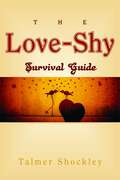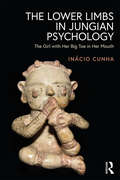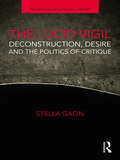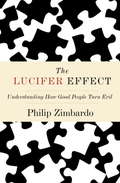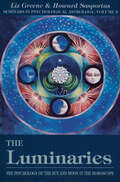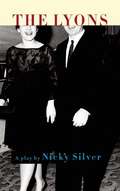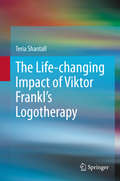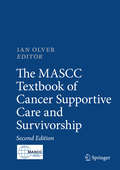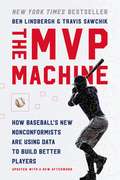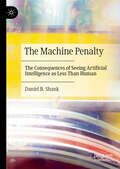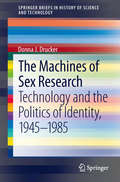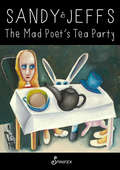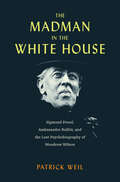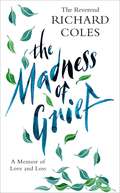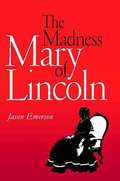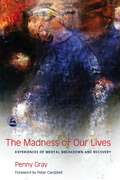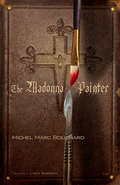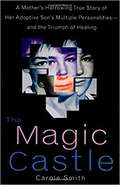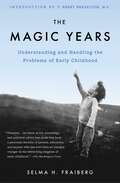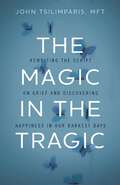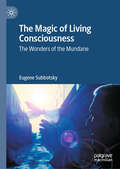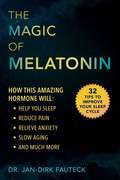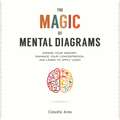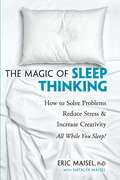- Table View
- List View
The Love-Shy Survival Guide
by Talmer Shockley"In his groundbreaking book, Talmer Shockley (himself a love-shy individual) presents a thoroughly accessible and motivating read for those suffering from love-shyness... Pay attention to his words of wisdom. They will help you find the partner that you so richly deserve" - Nick Dubin, author of Asperger's Syndrome and Bullying For many people, romantic and sexual relationships are complex and cause feelings of anxiety. For people who are love-shy, this anxiety is so overwhelming that it can make finding a partner feel like an impossible dream. Although relatively unrecognised, and therefore often undiagnosed, love-shyness is a condition which causes an intense phobia of romantic and sexual situations. This book is designed to help Love-Shys overcome this fear and allow themselves to meet, date, and eventually maintain romantic relationships with members of the opposite sex. A self-confessed Love-Shy, Talmer Shockley explores the condition, its links with Asperger's Syndrome and how it differs from normal shyness. He gives candid advice on how to deal with being love-shy, make dating an enjoyable experience, and survive the "relationship jungle". While love-shyness is predominately a male problem, it can also affect women, and the book offers tips on relationship success for both sexes. Refreshingly honest and insightful, The Love-Shy Survival Guide provides essential advice for love-shy people wanting to overcome their anxiety and form successful romantic relationships.
The Lower Limbs in Jungian Psychology: The Girl with Her Big Toe in Her Mouth
by Inácio CunhaIn The Lower Limbs in Jungian Psychology: The Girl with Her Big Toe in Her Mouth, Inácio Cunha explores the motif of lower limbs by amplifying their symbolism from a wide range of source materials, including an intriguing statuette from prehistoric Brazilian culture. Taking a Jungian perspective, Cunha gathers and compares rich material from different historical, anthropological and mythological viewpoints, as well as from fetish, dreams, fairy tales and physical symptoms. Noticing how often the subject of legs and feet manifested in his analytical practice, not only as symptoms but also as dreams and fantasies, Cunha set out to deeply scrutinize our symbolic understanding of these body segments. By observing the lower limbs in the context of evolution and their occurrence in mythology, he proposes a parallel between the evolution in the manner of walking in different species and the development of consciousness. Cunha also surveys dreams relating to these body parts in multiple manifestations, as part of complexes, fantasies and fetishes, and through the description of physical marks, spots and injuries. Mythological icons, such as Ulysses, Achilles, Oedipus, Jacob and others, are utilized to amplify the meaning of the feet and legs as far as their psychological meaning is concerned. The book also explores the lower limbs as a sign of creativity and projection of creative power, before moving to investigate a clay icon from a pre-Columbian indigenous tribe, the Tapajó: an ancient statuette of a girl with her left big toe in her mouth. Cunha analyzes the relevance of this image as an archetypal pattern, occurring not only in his clinical work— in clients’ dreams and physical and emotional issues related to their lower limbs—but also in other cultures’ depictions of the left toe in stories and images. The utilization of material gathered in his extensive research from multiple sources characterizes the method of amplification, advocated in analytical psychology as a possibility to extract symbolic meaning of a given image. The Lower Limbs in Jungian Psychology: The Girl with Her Big Toe in Her Mouth is an original overview of a rarely examined part of analytical psychology and symbolism, and will have great appeal to Jungian analysts, analytical psychologists, and psychotherapists interested in somatic, psychosomatic and symbolical understanding. It will also be of interest to academics and students of Jungian studies, psychotherapy, mythology, anthropology, history and symbolism.
The Lucid Vigil: Deconstruction, Desire and the Politics of Critique (Psychoanalytic Political Theory)
by Stella GaonStella Gaon provides the first fully philosophical account of the critical nature of deconstruction, and she does so by turning in an original way to psychoanalysis. Drawing on close readings of Freud and Laplanche, Gaon argues that Derridean deconstruction is driven by a normative investment in reason’s psychological force. Indeed, deconstruction is more faithful to the principle of reason than the various forms of critical theory prevalent today. For if one pursues the classical demand for rational grounds vigilantly, one finds that claims to ethical or political legitimacy cannot be rationally justified, because they are undone by logical undecidability. Gaon’s argument is borne out in the cases of Kantian deontology, Deweyan pragmatism, progressive pedagogy, Habermasian moral theory, Levinasian ethics and others. What emerges is the groundbreaking demonstration that deconstruction is impelled by a quasi-ethical critical drive, and that to read deconstructively is to radicalize the emancipatory practice of reason as self-critique. This important volume will be of great value to critical theorists as well as to Derrida scholars and researchers in social and political thought.
The Lucifer Effect: How Good People Turn Evil
by Philip ZimbardoIn The Lucifer Effect, the award-winning and internationally respected psychologist, Philip Zimbardo, examines how the human mind has the capacity to be infinitely caring or selfish, kind or cruel, creative or destructive. He challenges our conceptions of who we think we are, what we believe we will never do - and how and why almost any of us could be initiated into the ranks of evil doers. At the same time he describes the safeguards we can put in place to prevent ourselves from corrupting - or being ...
The Luminaries: The Psychology of the Sun and Moon in the Horoscope (Seminars in Psychological Astrology #Vol. 3)
by Liz Greene Howard SasportasFrom the founders of the Centre for Psychological Astrology, the third seminar in their series for practitioners discusses sun and moon signs.Liz Greene and Howard Sasportas, psychologists, astrologers and founders of the Centre for Psychological Astrology in London continue their series of seminars with The Luminaries. In this book, they discuss the mythology and psychology of the Moon, showing its relevance as a significator of relationships. In addition, the authors explore in depth the correspondence between the Sun and the development of consciousness. The Luminaries also includes a chapter on the lunation cycle.
The Lyons
by Nicky Silver"Comedy nirvana . . . satisfyingly mean and funny."-New York Post"Without sacrificing his mordant wit or bleak worldview, this distinctive dramatist shows a new maturity and empathy in."?The New York Times"Nicky Silver's terrific play is filled with moments when you can't stop laughing even though the circumstances indicate you really shouldn't. . . . A wonderful little riff on family dysfunction."?Associated Press"Silver finds plenty of fresh bite, and the sheer savagery of his observation here is breathtaking. Watching it brings the dueling sensations of wicked mirth and squirming discomfort at being trapped in the hell of someone else's family horrors. That these are exaggerations of our own is what gives the play its teeth."-The Hollywood ReporterThis vicious, hilarious black comedy opened on Broadway in April 2012 to rave reviews.Nicky Silver, that "strange progeny of a coupling between Mr. Neil Simon and Edward Albee" (The New York Times), has cornered the market on deliciously savage dysfunctional family comedies. Following an acclaimed run Off-Broadway, this intimate and frightening examination of how we cope with loneliness and disappointment currently delights audiences on Broadway.Rita Lyons is the matriarch of a family facing a major crossroads. Her husband, Ben, is dying and her grown children are struggling. As the family gathers in Ben's hospital room, they discover that they're as terrified of being together as they are of being alone.
The Lıfe-changıng Impact of Vıktor Frankl's Logotherapy
by Teria ShantallThis book provides an in-depth analysis of of the logotherapy of Viktor Frankl and delves into the spiritual depths of an inherent search for meaning in life. Written by a highly experienced and competent logotherapist trained by Frankl himself, this book is excitingly new and unique in that it takes the reader, in the role of a client accompanied by the author in the role of the therapist, through the unfolding phase-by-phase process of logotherapy. Logotherapy is explored as a depth and as a height psychology. From a provoked will to meaning out of the depths of a spiritual unconscious, the author takes the search for meaning to the ultimate heights in the achievement of human greatness. This book brings Frankl’s own profound life’s orientation back to life and, in its reader-friendly style, has the freshness of Frankl’s own way of writing. It is written in a refreshingly simple and straightforward style for easy accessibility to a wide readership. It includes cases studies and exercises for readers and is meant for use in logotherapy courses worldwide. Additionally, it will appeal to laypersons seeking a deeper meaning to their lives, psychology students and mental health professionals alike.
The MASCC Textbook of Cancer Supportive Care and Survivorship
by Ian OlverThis book is intended for medical students, residents, and fellows, as well as medical oncologists, radiation oncologists, surgeons, general practitioners, nurses and allied health workers. Complete with case vignettes, key points, and sidebar summaries to further assist readers using practical tips and tricks, this textbook provides current information on the management and prevention of cancer-related side effects, referring to up-to-date sources that are useful for conducting further research. It also introduces new topics, such as financial toxicity and complementary medicine, as well as covering the new side effects of targeted therapies not covered in the last edition. Additionally, MASCC Textbook of Cancer Supportive Care and Survivorship, 2nd edition assembles international, multidisciplinary experts who focus on a comprehensive range of symptoms and side effects associated with cancer and its treatment. Over the last five years, much progress has been made in supportive care, helping people cope with the symptoms of cancer and cancer treatment and addressing the physical and psychosocial matters of survivorship prior to, during, and after anticancer treatment. This is central to a patient’s wellbeing and the MASCC Textbook of Cancer Supportive Care and Survivorship, 2nd edition, explores not only the diagnosis and treatment, but also the increasingly recognized complex and ongoing symptoms experienced by long term cancer survivors. Significant advances have been made, designing strategies to manage the side effects and symptoms of treatment and to prevent them from occurring, maximizing the person’s ability to pursue daily activities.Reviews of the 1st edition: “This book reviews the management of cancer symptoms in patients and the side effects and late effects of treatment. The focus of the book is on supportive care and survivorship of cancer patients...The book covers symptomatology, medication and treatment, and system function of patients undergoing chemotherapy or radiation therapy...Photographs and algorithm charts further illustrate key points. This outstanding book is thorough in its explanations and easy to follow.” (Arlenda C. Thompson, Doody’s Review Service, January, 2011)
The MVP Machine: How Baseball's New Nonconformists Are Using Data to Build Better Players
by Ben Lindbergh Travis SawchikMove over, Moneyball -- a cutting-edge look at major league baseball's next revolution: the high-tech quest to build better players. As bestselling authors Ben Lindbergh and Travis Sawchik reveal in The MVP Machine, the Moneyball era is over. Fifteen years after Michael Lewis brought the Oakland Athletics' groundbreaking team-building strategies to light, every front office takes a data-driven approach to evaluating players, and the league's smarter teams no longer have a huge advantage in valuing past performance.Lindbergh and Sawchik's behind-the-scenes reporting reveals:How the 2017 Astros and 2018 Red Sox used cutting-edge technology to win the World SeriesHow undersized afterthoughts José Altuve and Mookie Betts became big sluggers and MVPsHow polarizing pitcher Trevor Bauer made himself a Cy Young contenderHow new analytical tools have overturned traditional pitching and hitting techniquesHow a wave of young talent is making MLB both better than ever and arguably worse to watchInstead of out-drafting, out-signing, and out-trading their rivals, baseball's best minds have turned to out-developing opponents, gaining greater edges than ever by perfecting prospects and eking extra runs out of older athletes who were once written off. Lindbergh and Sawchik take us inside the transformation of former fringe hitters into home-run kings, show how washed-up pitchers have emerged as aces, and document how coaching and scouting are being turned upside down. The MVP Machine charts the future of a sport and offers a lesson that goes beyond baseball: Success stems not from focusing on finished products, but from making the most of untapped potential.
The Machine Penalty: The Consequences of Seeing Artificial Intelligence as Less Than Human
by Daniel B. ShankThis book makes the argument that comparing AI to humans leads us to diminish similar outcomes from AI across situations. This may be taking a human&’s advice for a restaurant recommendation over an AI&’s or believing that AI can&’t be as biased as people can when denying loans to others. This machine penalty is caused both by comparing humans and AI in terms of appearance, identity, behavior, mind, and essence, and by situations involving controllable, personal, important, subjective, or moral decisions. It can be applied across many different situations, where we diminish different AI outcomes. We penalize machines&’ influence when they give advice, fairness when they evaluate people, blame when they cause harm, value when they produce art, and satisfaction when they provide companionship. The result is immediate consequences in those domains and downstream consequences for society. This monograph brings together diverse research from human-computer interaction, psychology, sociology, and communication including theories such as Computers Are Social Actors, anthropomorphism, mind perception, and algorithm aversion to present an expansive argument and evidence for the machine penalty.
The Machines of Sex Research: Technology and the Politics of Identity, 1945-1985
by Donna J. DruckerThe Machines of Sex Research describes how researchers worldwide integrated technology into studies of human sexuality in the postwar era. The machines they invented made new ways of seeing bodies possible. Some researchers who studied men used machines like penile strain gauges to police "deviant" male sexuality; others used less painful devices like penis-cameras to study women's sexual responses and map the physiology of their arousal and orgasm. While researchers used the findings from their technological innovations to propose their own views of how people should view their bodies and should manage their sexual lives, their readers interpreted their findings to enact their own visions of sexuality. Drucker shows how the use of machines in sex research provided some of the intellectual underpinnings of the sexual revolution and the women's and gay rights movements, and in turn how the sex research community developed new machines for investigations that would enhance sexual happiness rather than constrict it. The Machines of Sex Research is a key read for those interested in the intersections between human sexuality, technology, and twentieth-century social movements. Describes the little-known history of the machines of human sex research in the postwar era Shows how researchers worldwide invented and used machines to study human sexuality and the body in new ways, and how they used and improved each other's designs Relates the relationship between the machines of sex research to Cold War sexualities and gender and sexual liberation movements.
The Mad Poet's Tea Party
by Sandy Jeffsbut I am madnessand madness is meit holds you captivelike a hapless bunnycaught in the headlights.In this moving collection of poems, award-winning writer Sandy Jeffs shares her journey through madness over four decades, drawing inspiration from Lewis Carroll's Alice in Wonderland and the motley gathering of characters at the Mad Hatter's tea party. Both delightful and insightful, playful and serious, witty and whimsical, The Mad Poet's Tea Party provides a devastating commentary on how our society treats those with mental illness from the perspective of someone who has experienced all its interventions. It captures in poetic form the enigmas and contradiction in madness.
The Madman in the White House: Sigmund Freud, Ambassador Bullitt, and the Lost Psychobiography of Woodrow Wilson
by Patrick Weil“A rich study of the role of personal psychology in the shaping of the new global order after World War I. So long as so much political power is concentrated in one human mind, we are all at the mercy of the next madman in the White House.”—Gary J. Bass, author of The Blood TelegramThe notorious psychobiography of Woodrow Wilson, rediscovered nearly a century after it was written by Sigmund Freud and US diplomat William C. Bullitt, sheds new light on how the mental health of a controversial American president shaped world events.When the fate of millions rests on the decisions of a mentally compromised leader, what can one person do? Disillusioned by President Woodrow Wilson’s destructive and irrational handling of the 1919 Treaty of Versailles, a US diplomat named William C. Bullitt asked this very question. With the help of his friend Sigmund Freud, Bullitt set out to write a psychological analysis of the president. He gathered material from personal archives and interviewed members of Wilson’s inner circle. In The Madman in the White House, Patrick Weil resurrects this forgotten portrait of a troubled president.After two years of collaboration, Bullitt and Freud signed off on a manuscript in April 1932. But the book was not published until 1966, nearly thirty years after Freud’s death and only months before Bullitt’s. The published edition was heavily redacted, and by the time it was released, the mystique of psychoanalysis had waned in popular culture and Wilson’s legacy was unassailable. The psychological study was panned by critics, and Freud’s descendants denied his involvement in the project.For nearly a century, the mysterious, original Bullitt and Freud manuscript remained hidden from the public. Then in 2014, while browsing the archives of Yale University, Weil happened upon the text. Based on his reading of the 1932 manuscript, Weil examines the significance of Bullitt and Freud’s findings and offers a major reassessment of the notorious psychobiography. The result is a powerful warning about the influence a single unbalanced personality can have on the course of history.
The Madness of Grief: A Memoir of Love and Loss
by Richard ColesWhether it is pastoral care for the bereaved, discussions about the afterlife, or being called out to perform the last rites, death is part of the Reverend Richard Coles's life and work. But when his partner the Reverend David Coles died, shortly before Christmas in 2019, much about death took Coles by surprise. For one thing, David's death at the early age of forty-three was unexpected.The man that so often assists others to examine life's moral questions now found himself in need of help. He began to look to others for guidance to steer him through his grief. The flock was leading the shepherd. Much about grief surprised him: the volume of 'sadmin' you have to do when someone dies, how much harder it is travelling for work alone, even the pain of typing a text message to your partner - then realising you are alone.The Reverend Richard Coles's deeply personal account of life after grief will resonate, unforgettably, with anyone who has lost a loved one.
The Madness of Mary Lincoln
by Jason EmersonIn 2005, historian Jason Emerson discovered a steamer trunk formerly owned by Robert Todd Lincoln's lawyer and stowed in an attic for forty years. The trunk contained a rare find: twenty- five letters pertaining to Mary Todd Lincoln's life and insanity case, letters assumed long destroyed by the Lincoln family. Mary wrote twenty of the letters herself, more than half from the insane asylum to which her son Robert had her committed, and many in the months and years after. The Madness of Mary Lincoln is the first examination of Mary Lincoln's mental illness based on the lost letters, and the first new interpretation of the insanity case in twenty years. This compelling story of the purported insanity of one of America's most tragic first ladies provides new and previously unpublished materials, including the psychiatric diagnosis of Mary's mental illness and her lost will. Emerson charts Mary Lincoln's mental illness throughout her life and describes how a predisposition to psychiatric illness and a life of mental and emotional trauma led to her commitment to the asylum. The first to state unequivocally that Mary Lincoln suffered from bipolar disorder, Emerson offers a psychiatric perspective on the insanity case based on consultations with psychiatrist experts. This book reveals Abraham Lincoln's understanding of his wife's mental illness and the degree to which he helped keep her stable. It also traces Mary's life after her husband's assassination, including her severe depression and physical ailments, the harsh public criticism she endured, the Old Clothes Scandal, and the death of her son Tad. The Madness of Mary Lincoln is the story not only of Mary, but also of Robert. It details how he dealt with his mother's increasing irrationality and why it embarrassed his Victorian sensibilities; it explains the reasons he had his mother committed, his response to her suicide attempt, and her plot to murder him. It also shows why and how he ultimately agreed to her release from the asylum eight months early, and what their relationship was like until Mary's death. This historical page-turner provides readers for the first time with the lost letters that historians had been in search of for eighty years.
The Madness of Our Lives: Experiences of Mental Breakdown and Recovery
by Penny Gray`The Madness of our Lives is a worthy contribution to the literature on first person accounts of mental distress and illness. Its strength is in the range of experiences it canvasses, and in the freedom given to interviewees to tell their own stories. This is a highly readable and informative book.' - Metapsychology Online `The Madness of our Lives consists largely of transcribed interviews with people who have undergone "madness" and to a greater or lesser extent achieved "recovery". It usefully opens both of these terms up to scrutiny. The book is harrowing but hopeful. It is also frequently moving and through-provokingâ?¦In giving advice to people who have experienced madness; the book performs, firstly, a powerful political/ethical gesture. Those interviewed by Penny Gray recount painful experiences of being misunderstood, derided, bullied, abused - in their personal and professional lives and, not least, during treatment; there are numerous accounts here of unsympathetic or negligent GPs and mental health practitioners. This is shocking and compelling material, which needs to be aired.' -Journal of Mental Health, April 2007 `This book comprises a collection of eleven first hand accounts of breakdown and recovery. It is both a fascinating and insightful read with an equal emphasis on recovery and breakdown. The book is aimed at a wide audience of those who have experienced a breakdown themselves and those who care for someone who has experienced breakdown including those in the mental health sector. It certainly would be of interest to all of these groups and the reader would take away a better understanding of the diversity of causes, diversity of experiences and diversity of means of recovery. Importantly, the book is an opportunity to give voice to those who have experienced breakdown and recovery.' -The Journal of Critical Psychology, Vol.7, Spring 2007 `This is a superb book documenting the 1st hand accounts of people who have experienced mental health issues. It not only is fascinating from an anthropological perspective but also in respect of their service experiences, each of which variesâ?¦This book should be compulsory curriculum reading for anyone studying or working in this sector. The most valuable lesson that it provides is that one mental health service user's experience is not necessarily another's and therefore services must be person-centred, creating services for people, and avoiding the urge to make the people fit the services. The book would also be of interest to anyone interested in narratives following poor health or disability.' -The Encephalitis Society `Since counselling is fundamentally about listening to clients, this book represents a refreshing return to first principlesâ?¦We all need to be reminded to listen well and to wear our theory lightly. If we need a reminder that people are active self-healers and the best we may be able to do is to accompany them (and not get in the way), we could take this book as essential reading.' -Healthcare Counselling and Psychotherapy Journal What precipitates mental breakdown? How do people experience such extremes - and how do they see others' interpretations and interventions? Most important, how do people recover from these episodes and get their lives back? These are some of the questions addressed in this anthology of first-hand accounts of mental breakdown and recovery. Eleven very different stories together shed light on what triggers mental breakdown, what it is like to be `mad', whether treatment helps and how people reclaim themselves and their lives. Based on tape-recorded interviews with people who have been through a mental breakdown and come out the other side of it, The Madness of Our Lives breaks the silence around mental distress and offers hope and optimism to mental health service users and their carers.
The Madness of Women: Myth and Experience (Women and Psychology)
by Jane M. Ussher Jane Professor UssherNominated for the 2012 Distinguished Publication Award of the Association for Women in Psychology! Why are women more likely to be positioned or diagnosed as mad than men? If madness is a social construction, a gendered label, as many feminist critics would argue, how can we understand and explain women's prolonged misery and distress? In turn, can we prevent or treat women’s distress, in a non-pathologising women centred way? The Madness of Women addresses these questions through a rigorous exploration of the myths and realities of women's madness. Drawing on academic and clinical experience, including case studies and in-depth interviews, as well as on the now extensive critical literature in the field of mental health, Jane Ussher presents a critical multifactorial analysis of women's madness that both addresses the notion that madness is a myth, and yet acknowledges the reality and multiple causes of women's distress. Topics include: The genealogy of women’s madness – incarceration of difficult or deviant women Regulation through treatment Deconstrucing depression, PMS and borderline personality disorder Madness as a reasonable response to objectification and sexual violence Women’s narratives of resistance This book will be of great interest to students and scholars of psychology, gender studies, sociology, women's studies, cultural studies, counselling and nursing.
The Madonna Painter
by Linda Gaboriau Michel Marc BouchardAt the end of the Great War, to protect his village from the Spanish flu epidemic, a priest commissions an Italian painter to decorate the local church with a fresco dedicated to the Virgin Mary. The painter is to choose, among four local women all named Mary, a model for his work. Superstition collides with desire, and lies are unmasked.
The Magic Castle: A Mother's Harrowing True Story of Her Adoptive Son's Multiple Personalities and the Triumph of Healing
by Carole Smith"This is a true account of my experiences in successfully raising a child who suffered from multiple personality disorder. In writing the book, I have made extensive use of notes I took during therapy sessions and directly after encounters with alters, mental health personnel, a child placement organization, and the office of the district attorney. Occasionally, I have combined several similar events to avoid repetition. I was not present at the original incidents but I did observe many revivifications of the actual events. My belief in the truth of the personalities' revelations is based upon physical and circumstantial evidence and also occasional verification from witnesses. All of my encounters with the alters, including revivifications, have been accurately depicted and have not been exaggerated in any way. Many names, locations, and identifying details, including those of my family, have been changed or modified. The only names used in this book that have not been altered are those of Bill Conti, Dr. Steven J. Kingsbury, Dr. Nina Fish-Murray, Marie Párente, and Dr. Van der Kolk. The names of places and institutions that have not been changed are Boston Children's Hospital; Camp Wedicko; County District Attorneys Office; Massachusetts Department of Social Services; Massachusetts Mental Health Center; Mount Auburn Hospital; Northboro, Massachusetts; Robert F. Kennedy Residential School; and University of Massachusetts Acute Adolescent Psychiatric Unit at Westboro. As a final note, when he was thirteen years old, my son wanted to sever all connections to the perpetrators and asked to have his first, middle, and last names changed. I gave him an old family name of mine, my husband's middle name, and, of course, our last name. It is important that the reader know of these changes. However, throughout this book I have simply called him Alex."
The Magic Years
by T. Berry Brazelton Selma H. FraibergTo a small child, the world is an exciting but sometimes frightening and unstable place. In The Magic Years, Selma Fraiberg takes the reader into the mind of the child, showing how he confronts the world and learns to cope with it. With great warmth and perception, she discusses the problems at each stage of development and reveals the qualities -- above all, the quality of understanding -- that can provide the right answer at critical moments.
The Magic in the Tragic: Rewriting the Script on Grief and Discovering Happiness in Our Darkest Days - A New Approach to Resilience, Grieving, and Healing in the Midst of Tragedy or Trauma
by John TsilimparisDiscover a new way to think about your grief and loss. Esteemed psychotherapist and bereavement counselor John Tsilimparis, MFT, shows you the ways grief and loss intertwine with beauty, tenderness, and human connection to empower you to build emotional resilience in a difficult world.What if you could flip the script on the pain in your life and learn how to cultivate purpose and joy—not after grief but during it, not despite hardship but because of it? What if you could find a type of magic in your tragedy? A way to understand your emotions and reframe your grief that opens you up rather than shuts you down?Drawing on his own story, scientific and philosophical evidence, the soothing effects of the arts and nature, and three decades of experience as a psychotherapist and grief counselor, John Tsilimparis offers a new take on adversity in The Magic in the Tragic. In these uncertain times, you'll be equipped to:Approach grief in an empowering wayAcquire the tools needed to develop emotional resiliencyAddress fear and uncertainty head-on rather than avoid itEmbrace difficult times without sugarcoating themAccess the unseen beauty of your deepest emotionsDiscover the healing power and belonging of music, art, and nature The Magic in the Tragic powerfully explores how the hardest things in life intersect purpose and meaning, splendor and connectedness. When you embrace the magic in your tragic seasons, you can step into the future with hope, knowing that even when grief comes, it comes with an invitation to new life.
The Magic of Living Consciousness: The Wonders of the Mundane
by Eugene SubbotskyThis book demystifies the notion of living consciousness and aims to show that, far from being a mere accompaniment to brain functions, living consciousness defines the features of both physical objects and human artifacts. The distinction is between living consciousness, which includes subjective experiences ‘here and now’ (e.g., perceptions, feelings, imagination, and creative thinking) and conforms to the laws of magic, versus objectified consciousness that comprises physical (e.g., computers) and symbolic (e.g., languages and concepts) human artifacts and conforms to the laws of nature and formal logic.The magnificent success of science in the modern world has plunged many scientists into the illusion that magical events are ancient history and exist today only in art and night dreams. The illusion reached its pinnacle in the middle of the 20th century, when nuclear power stations, flights to the Moon, early computers, genetic engineering and other wonders of science made some scientists believe that there is nothing in the world that cannot be explained by science. But there was a price to pay for this scientific optimism – the scientists became blind to their living consciousness. They began looking at the world as if nature and objectified consciousness were the only things that mattered, with living consciousness being viewed as a mundane thing that accompanies brain processes but has no causal powers.This book examines how our living consciousness works, and how our understanding of this work helps in solving key problems of modern life, such as facilitating creativity, protecting from magical manipulation with minds, fighting certain kinds of crime, managing fake reality, preventing misuses in psychotherapy and other psychological practices, comprehending controversial issues in science, and tracing origins of totalitarian media narratives that trigger hatred and wars.
The Magic of Melatonin: How this Amazing Hormone Will Help You Sleep, Reduce Pain, Relieve Anxiety, Slow Aging, and Much More
by Dr. Jan-Dirk FauteckEverything you need to know about the sleep-regulating hormone melatonin! We've always been told maintaining a healthy sleep cycle is of utmost importance to your day-to-day health. But have we ever been told why? Anyone familiar with chronobiology (the science of natural physiological rhythms) knows that the hormone melatonin is the foundation hormone for the circadian rhythm research. In fact, melatonin and sleep research is one of the most fundamental and best-known rhythms in the human body. Disturbance of the melatonin cycle due to any reason interferes with the sleep/wake cycle, which ultimately leads to a number of other neurobehavioral and psychological problems. Due to the widespread misuse of light at night, modern societies no longer hold a clear distinction between day and night. This increase in light pollution at night interferes with the ability of the pineal gland to produce and disperse melatonin properly. As a result, either no or a severely dampened melatonin rhythm exists in individuals exposed to artificial light during the normal dark hours, which includes most people living in cities and in all individuals who work at night. This suppression of a distinct melatonin rhythm and all other biological cycles represents a serious perturbation of the biological clock of many organs, contributing to pathophysiology. Dr. Fauteck also addresses the impact of proper supplemental melatonin and various studies and research done on the topic. Melatonin has been widely used to correct problems of sleep disorders, and while this book looks into that research further and breaks down the impact of melatonin and sleep, it also addresses research that addresses melatonin use for its ability to regulate the circadian clock in general and impact other areas of health such oxidative stress, neuropsychiatric disorders, headaches, chronic pain, digestion, diabetes, fertility, pregnancy, cancer, and many age-related diseases. In this book, Dr. Fauteck summarizes critical information related to the necessity of maintaining regular biological rhythms and describes the pathological consequences of circadian rhythm disturbances. He provides a clear description of how melatonin is produced and secreted, how the prevailing artificially imposed light/dark cycle can disturb its rhythm, and how this translates into other potential pathologies.
The Magic of Mental Diagrams: Expand Your Memory, Enhance Your Concentration, and Learn to Apply Logic
by Claudio ArosWhen Einstein said we only use 10 percent of our brain, he was inviting us to explore all those capabilities that are waiting to be awakened. This book finally explains how to do just that. Mental diagrams are a simple, efficient means of activating all our potential. Upon sketching a mental diagram, we create a blueprint with shapes, colors, and figures to process information faster and to increase our ability to synthesize. This excellent, creative system of thinking allows us to obtain a joint vision of life’s daily problems in addition to strengthening all the areas in which our mind operates, like memory, concentration, logic, or intuition. In the pages of this book, you will discover: * The function of the human brain * How to create mental diagrams * Exercises to strengthen memory * Intelligence regarding personal decisions * Tests to develop intuition and creativity * Secrets of the great lecturers
The Magic of Sleep Thinking: How to Solve Problems, Reduce Stress, and Increase Creativity While You Sleep
by Eric Maisel Natalya MaiselImagine solving problems and increasing creativity while you sleep! Grounded in current brain research, this book introduces a simple but revolutionary program that shows how to do just that by learning to tune into your brain's deepest intuitions. Case studies of ordinary people demonstrate how to use sleep thinking to tackle anxiety, weight gain, anger management issues, poor school grades, and more through a bit of self-inquiry, new bedtime and morning routines, and a few other lifestyle changes and additions.Dr. Eric Maisel presents clear, useful information relevant to anyone working through any sort of problem: personal, creative, or career-related. Readers learn how to use their own brainpower to extract important information from sleep thinking, yielding answers that lead to actions and actions that lead to change.
